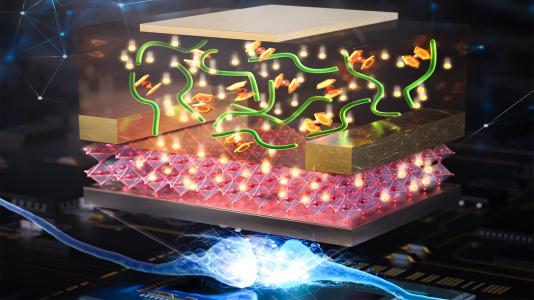
|
Getting your Trinity Audio player ready...
|
In microelectronics, a semiconductor is a substance with specific electrical properties, enabling it to be the foundation for computers and other electronic devices. Typically, a semiconductor is a solid chemical element or compound that can conduct electricity under certain conditions but not others, making it an ideal medium for controlling electrical current in everyday electrical appliances.

In this context, researchers have made a significant breakthrough in microelectronics, where the pursuit of creating increasingly compact yet more potent integrated circuits remains relentless. Scientists at the U.S. Department of Energy’s Argonne National Laboratory have made significant strides in developing a new microelectronic material that could potentially revolutionise the field.
Microelectronics is the branch of electronics engineering focused on creating and producing miniature electronic components, like microprocessors, utilising methods such as photolithography. These components are commonly made using microelectromechanical systems (MEMS) or microelectronic mechanical systems (MEMS).
Their pioneering research has been published in Advanced Materials, introducing an innovative technique known as “redox gating.” This technique shows promising potential in controlling the movement of electrons within semiconducting materials, thereby enabling highly efficient and low-power operation.
This technique can improve the performance and capabilities of microelectronic devices, addressing the challenges of miniaturisation and energy efficiency in today’s supercomputers.
The challenge facing microelectronics is to maintain peak performance while consuming only a fraction of the electricity of conventional electronics, all within the confines of shrinking chip sizes. This is crucial to prevent overheating and ensure the reliability of electronic devices. Redox gating involves using a chemical reaction to transfer electrons, offering a new way to control the flow of electrons within a semiconductor.
In the experiment conducted by the Argonne team, a device was designed to regulate electron flow by applying a voltage across a material, essentially creating an electron gate. When the voltage reached a specific threshold, electrons would be injected through the gate from a source redox material into a channel material. This process allowed the semiconducting device to act like a transistor, switching between more conducting and insulating states.
One of the key advantages of the redox gating strategy is its ability to modulate electron flow by a significant amount, even at low voltages, resulting in much greater power efficiency. This enhances performance and prevents damage to the system, as the materials can be cycled repeatedly with almost no degradation in performance.
Moreover, this technique opens up possibilities for creating new quantum materials whose phases could be manipulated at low power, potentially leading to the development of innovative quantum devices.
The implications of this breakthrough extend beyond just improving the efficiency of electronic devices. It could also pave the way for circuits that mimic the energy-efficient operation of the human brain. This is particularly significant as researchers seek to develop emergent properties in materials that go beyond the capabilities of conventional devices.
The research conducted at Argonne’s Advanced Photon Source and Centre for Nanoscale Materials, both DOE Office of Science user facilities, played a crucial role in characterising the redox gating behaviour and synthesising the materials used in the experiment. The collaborative effort of researchers from various disciplines, including materials science, physics, and chemistry, underscores the interdisciplinary nature of this cutting-edge work.
The development of redox gating represents a significant advancement in microelectronics, offering a pathway to creating more efficient, low-power semiconductors and quantum devices. This breakthrough addresses the challenges facing microelectronics and opens up exciting possibilities for future technological innovations.
The integration of redox gating into microelectronic devices could lead to substantial improvements in their efficiency and power consumption. This advancement has the potential to reshape the landscape of microelectronics, paving the way for the development of smaller, more energy-efficient semiconductors and quantum devices.
With continued research and innovation in this area, researchers anticipate a future where microelectronics will be more integral in advancing technology across various industries





















